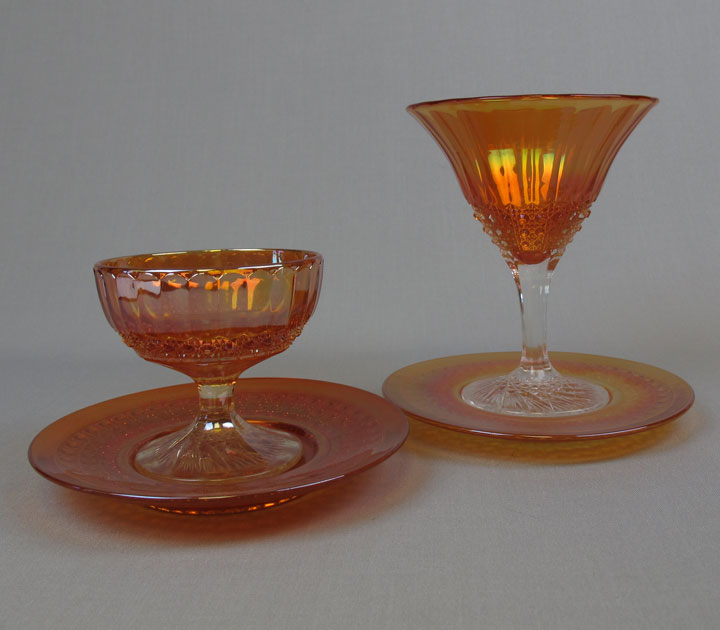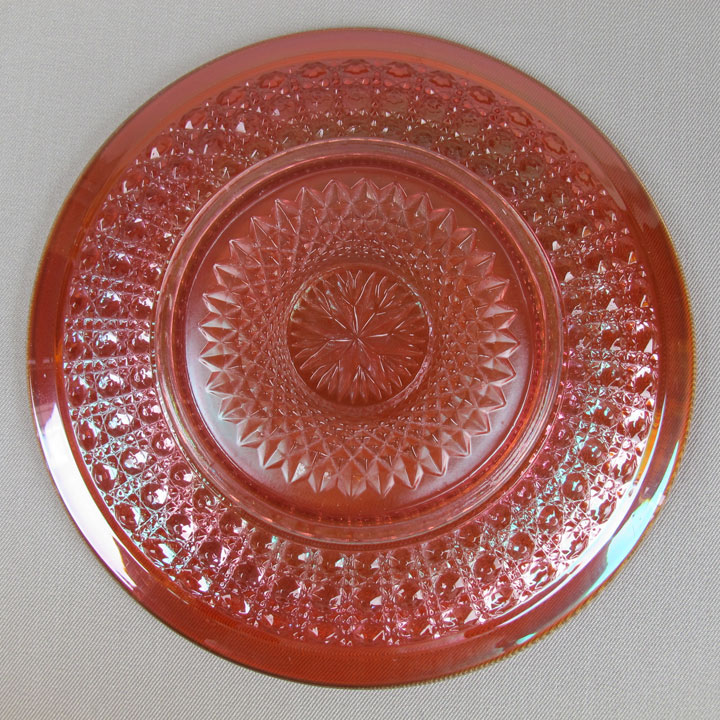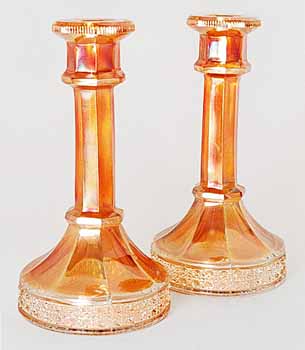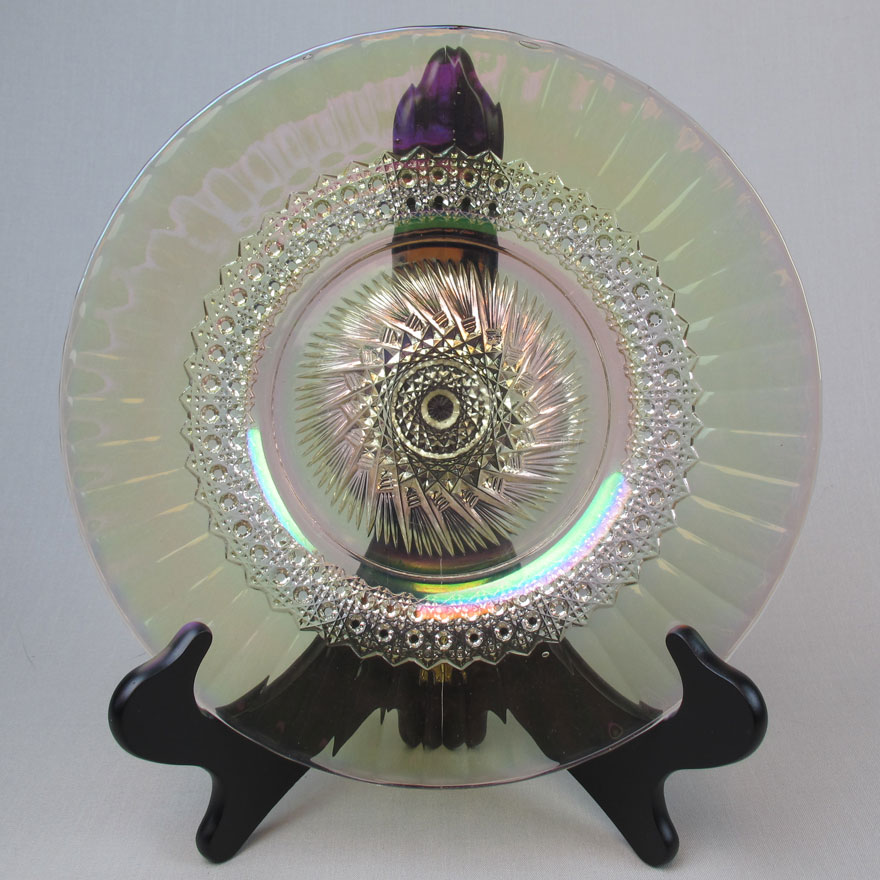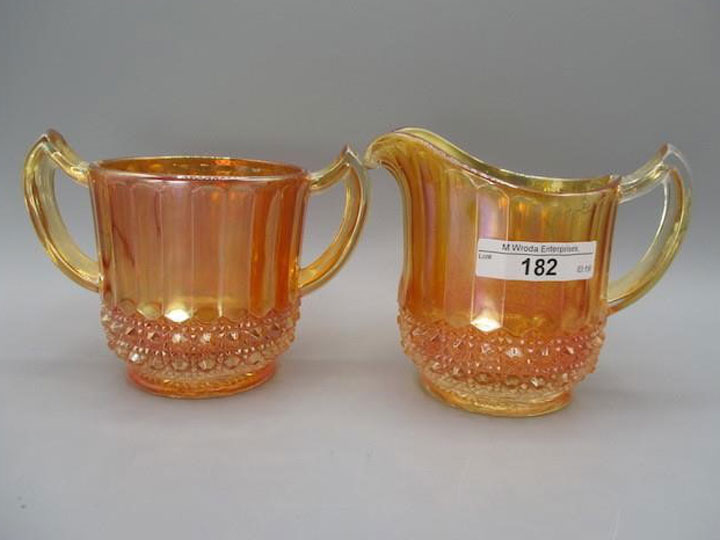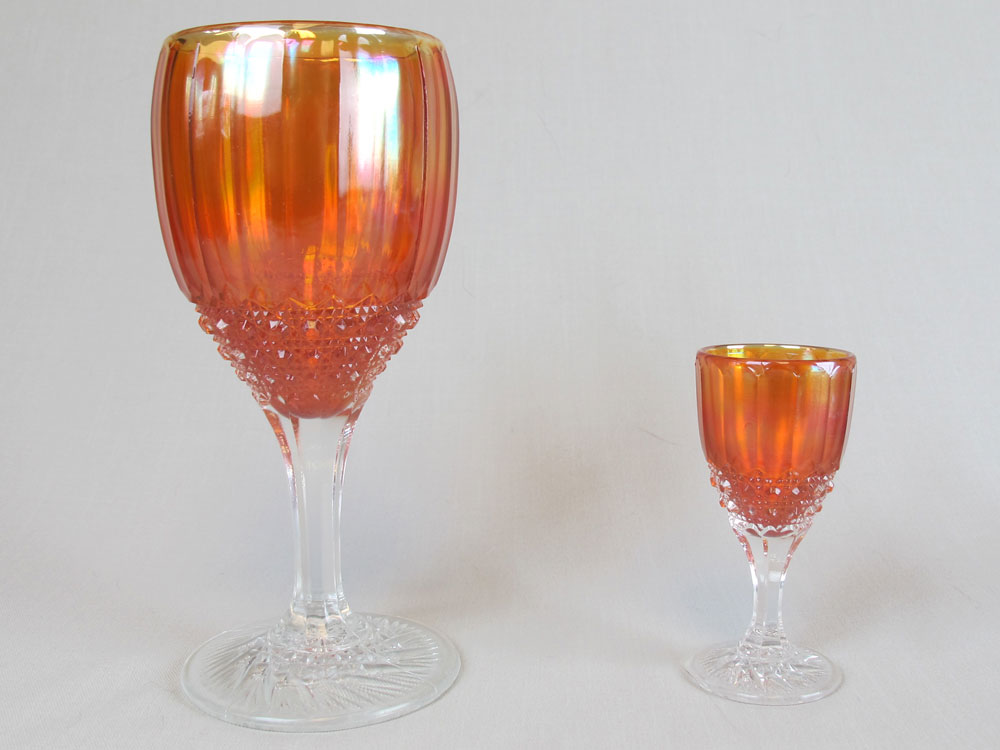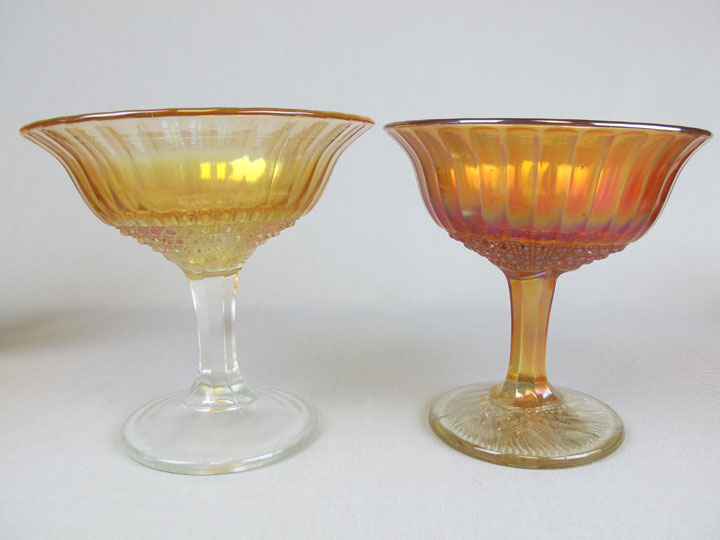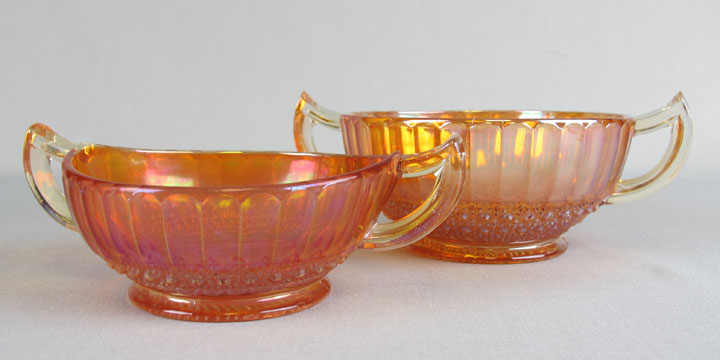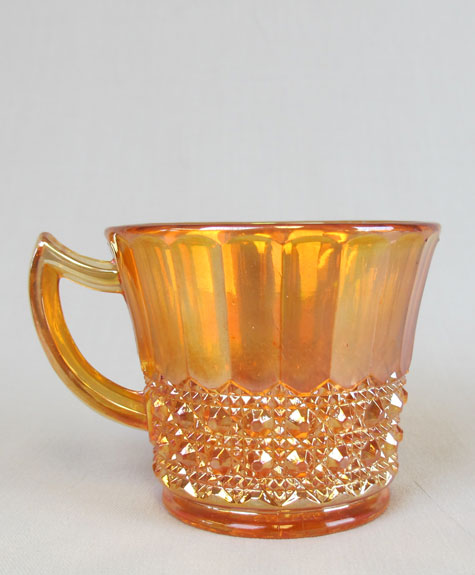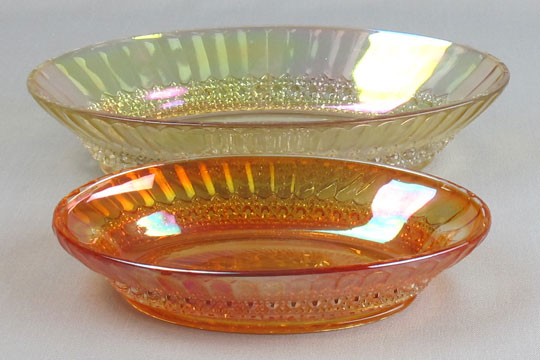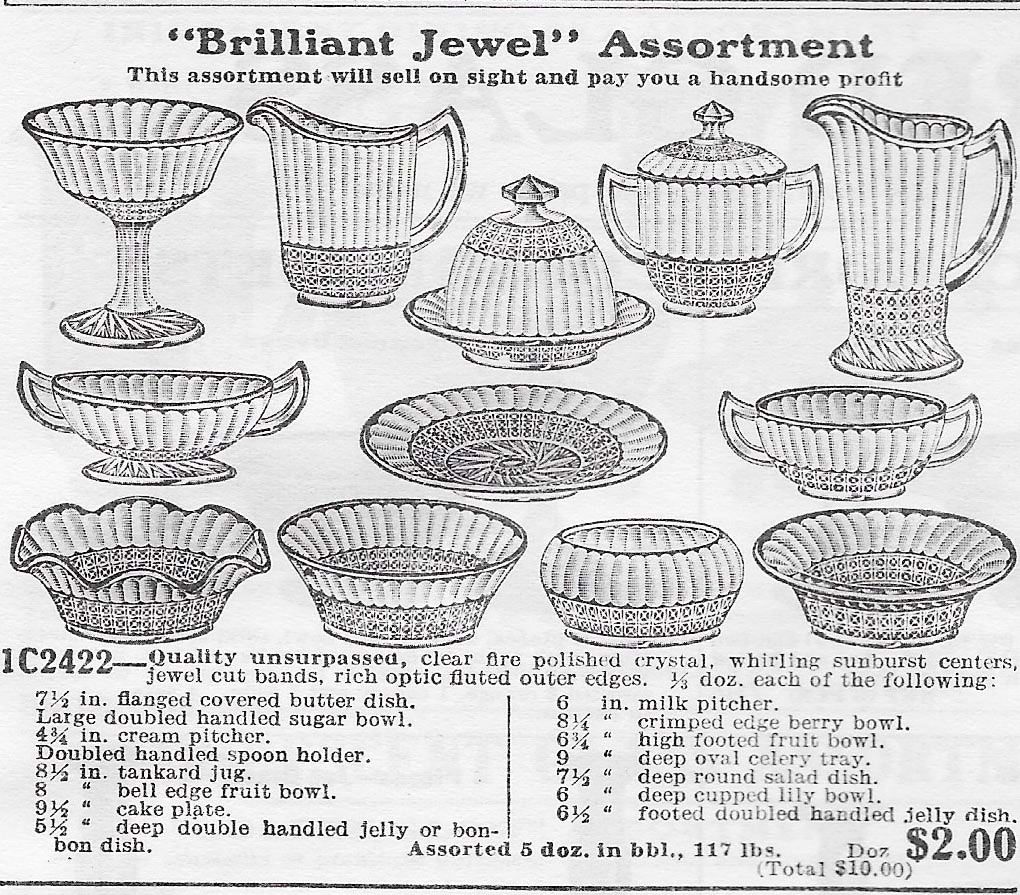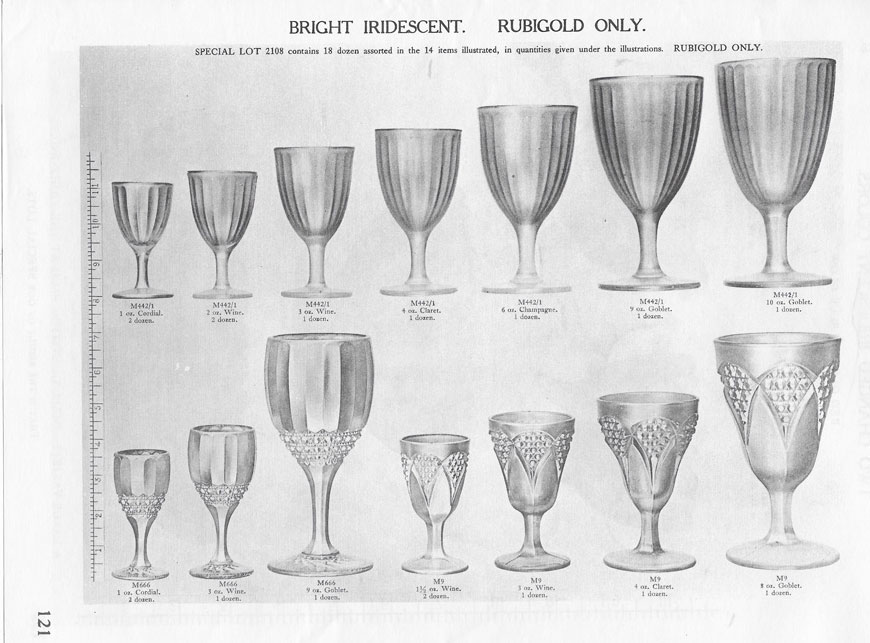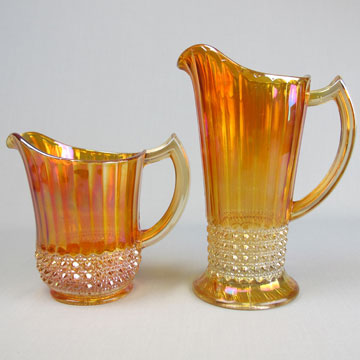


There are two sizes of milk pitchers; a shorter version and one about 8 1/2 inches tall. These are mostly found in marigold but the shorter milk pitcher is known in a rare smoke while the taller one is known in a rare purple and a rare white. The shorter milk pitcher is 5 3/4 inches tall and has a base of 3 inches. The photo on the left show the 5 3/4 inch milk pitcher and the 8 1/2 inch milk pitcher which both appear in the ad in the center photo.
There are two sizes of tumblers. The taller tumbler is referred to as a lemonade. It holds 12 ounces and is 4 5/8 inches tall. The other is the standard tumbler. It holds 9 ounces and is 4 inches tall.
